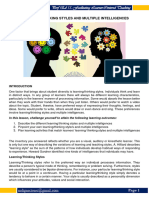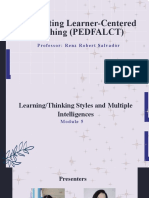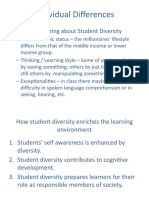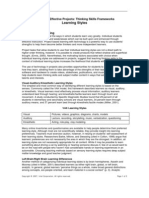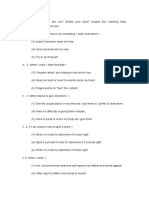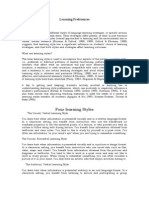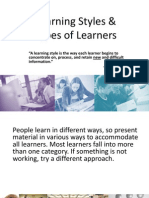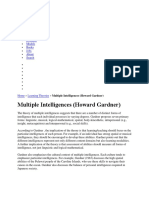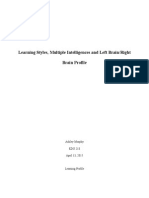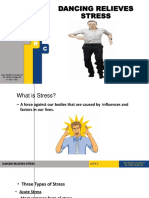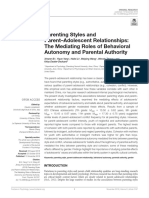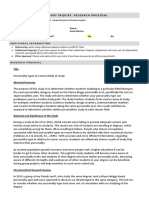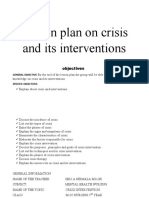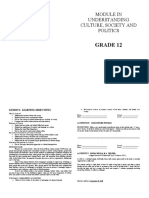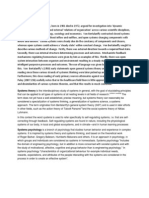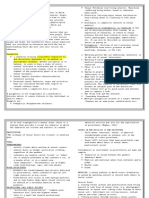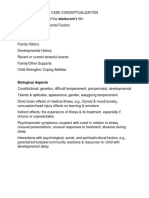0% found this document useful (0 votes)
63 views5 pagesModule 5 in FLCT
Module 5 focuses on learning and thinking styles, highlighting individual differences in how students learn and think. It discusses various learning styles, such as visual, auditory, and kinesthetic, as well as the theory of multiple intelligences, which suggests that different individuals excel in different areas of learning. The module emphasizes the importance of using diverse teaching strategies to accommodate these differences for effective learning.
Uploaded by
Micah GuinucudCopyright
© © All Rights Reserved
We take content rights seriously. If you suspect this is your content, claim it here.
Available Formats
Download as DOCX, PDF, TXT or read online on Scribd
0% found this document useful (0 votes)
63 views5 pagesModule 5 in FLCT
Module 5 focuses on learning and thinking styles, highlighting individual differences in how students learn and think. It discusses various learning styles, such as visual, auditory, and kinesthetic, as well as the theory of multiple intelligences, which suggests that different individuals excel in different areas of learning. The module emphasizes the importance of using diverse teaching strategies to accommodate these differences for effective learning.
Uploaded by
Micah GuinucudCopyright
© © All Rights Reserved
We take content rights seriously. If you suspect this is your content, claim it here.
Available Formats
Download as DOCX, PDF, TXT or read online on Scribd
/ 5





